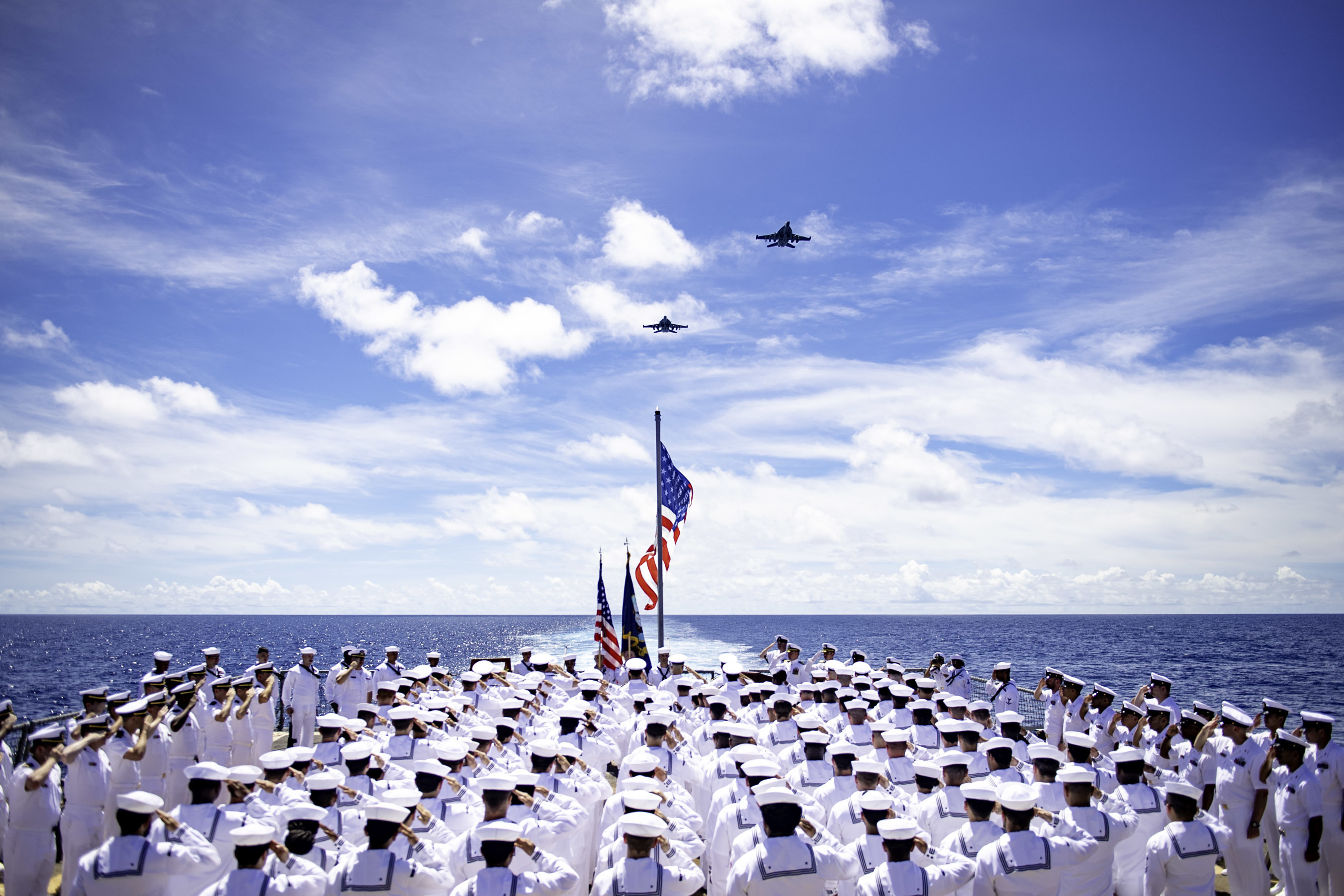
This post is part of a series looking back at the top naval stories from 2022.
This year saw the U.S. Navy trying to balance its focus on presence in the Indo-Pacific region with the need for ongoing deterrence missions in Europe amid Russia’s ongoing invasion of Ukraine.
With a steady warship presence in U.S. 6th Fleet, Navy ships had the chance to drill and operate with NATO and other European allies throughout the theater this year, as Russia continued its push into Ukraine.
Due in part to the war, this year also marked a departure from the U.S. Navy’s years of operating an aircraft carrier in the Middle East.
Meanwhile, new aircraft carrier USS Gerald R. Ford (CVN-78) went out for its first operational stress test, in which it pushed the ship’s new systems and drilled with allies and partners throughout the Atlantic and conducted its first foreign port call.
On the maintenance front, the Navy still struggled to dig out of the submarine maintenance backlog at the public shipyards and the mid-life refueling and overhaul of USS George Washington (CVN-73) at Newport News Shipbuilding, Va., is nearly 19 months behind schedule.
Indo-Pacific
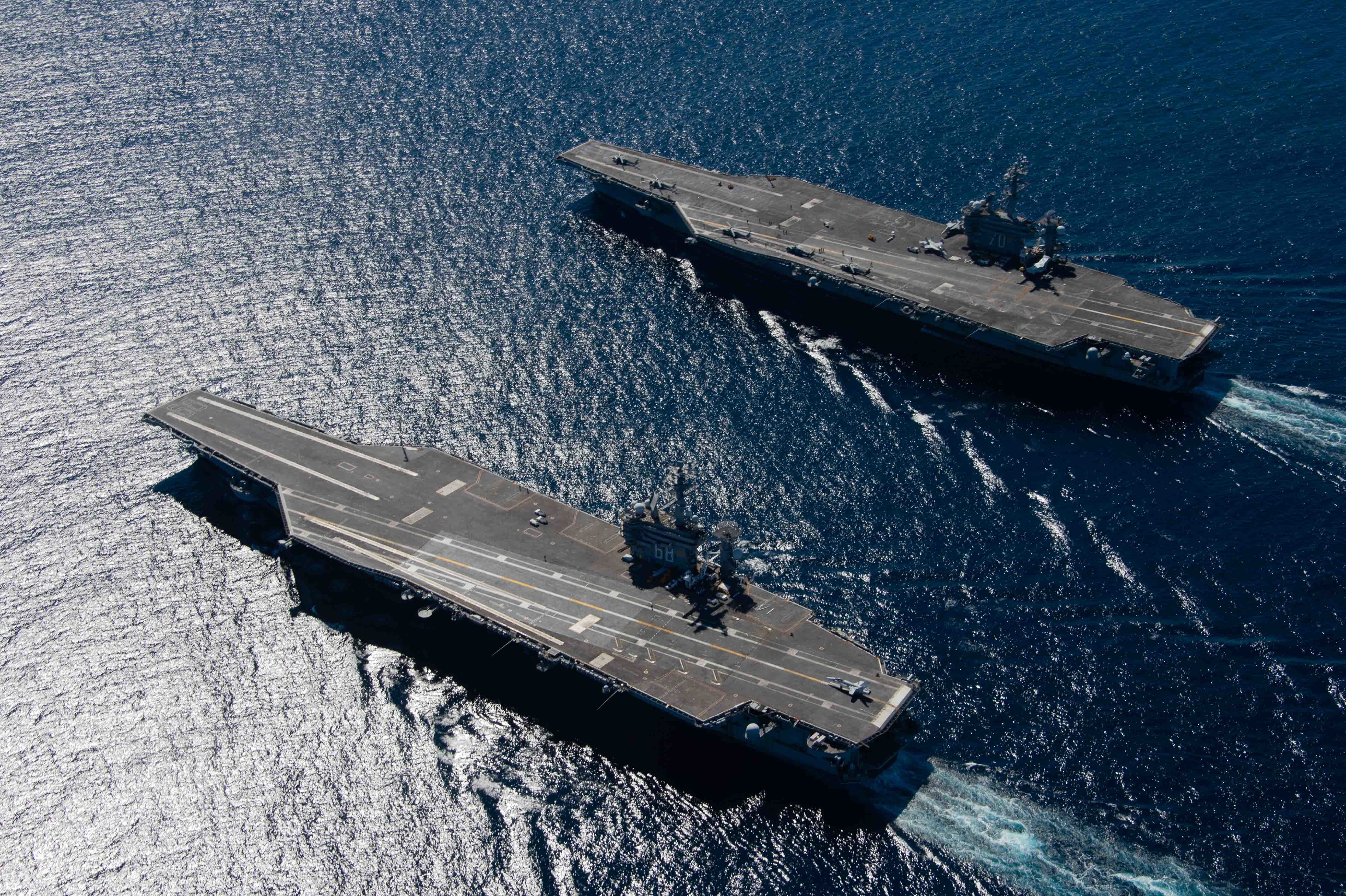
The Navy once again kept a consistent carrier presence in the Indo-Pacific region this year.
At the start of 2021, USS Carl Vinson (CVN-70) was operating in the Western Pacific. The aircraft carrier was on the tail end of its Indo-Pacific deployment, which was also the first deployment for the fifth-generation carrier air wing featuring Navy F-35C Lightning II Joint Strike Fighters and the CMV-22B Osprey.
While operating in the South China Sea in late January, an F-35C with the air wing aboard Vinson went over the edge of the deck in a ramp strike. The pilot safely ejected from the aircraft and Navy salvage crews later recovered the F-35C from the South China Sea.
During a USNI News trip aboard Vinson in February, officials said the crew recovered quickly after the January crash.
“When the mishap happened, we had additional aircraft airborne that needed to land. So the training kicked in immediately. And I was in awe watching … everybody on the flight deck – including the air wing personnel – respond to that emergency because we had to replace all four wires. We had to pick up things off the flight deck so that we could clear the [landing area] to clear all the [foreign object debris],” a defense official told USNI News at the time.
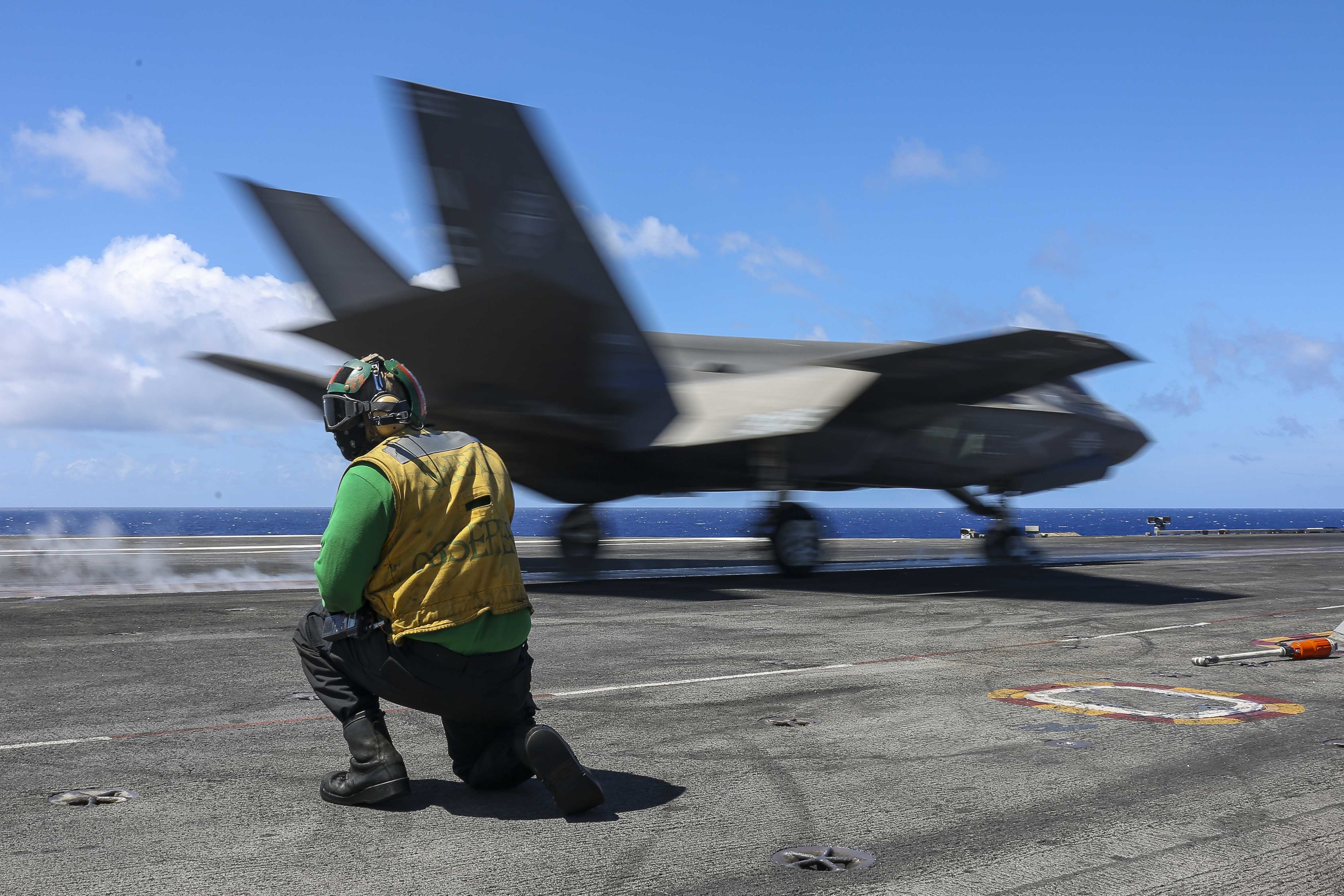
Meanwhile, USS Abraham Lincoln (CVN-72) deployed to the Indo-Pacific in early January with a squadron of U.S. Marine Corps F-35Cs and Navy CMV-22B Ospreys. For about a month, the U.S. Navy had two carrier strike groups operating in U.S. 7th Fleet.
Lincoln operated mostly in U.S. 7th Fleet during its deployment, in which it drilled with both Japan and the Philippines. The carrier also participated in the biennial Rim of the Pacific exercise off the coast of Hawaii in July.
The Navy’s forward-deployed aircraft carrier, USS Ronald Reagan (CVN-76), also operated in the Indo-Pacific for its spring patrol from May through August and a patrol this fall.
During its first patrol, Reagan was on station near Taiwan when House Speaker Nancy Pelosi (D-Calif.) made a trip to the island that sparked condemnation from China. USS Tripoli (LHA-7) was also operating near Taiwan at the time.
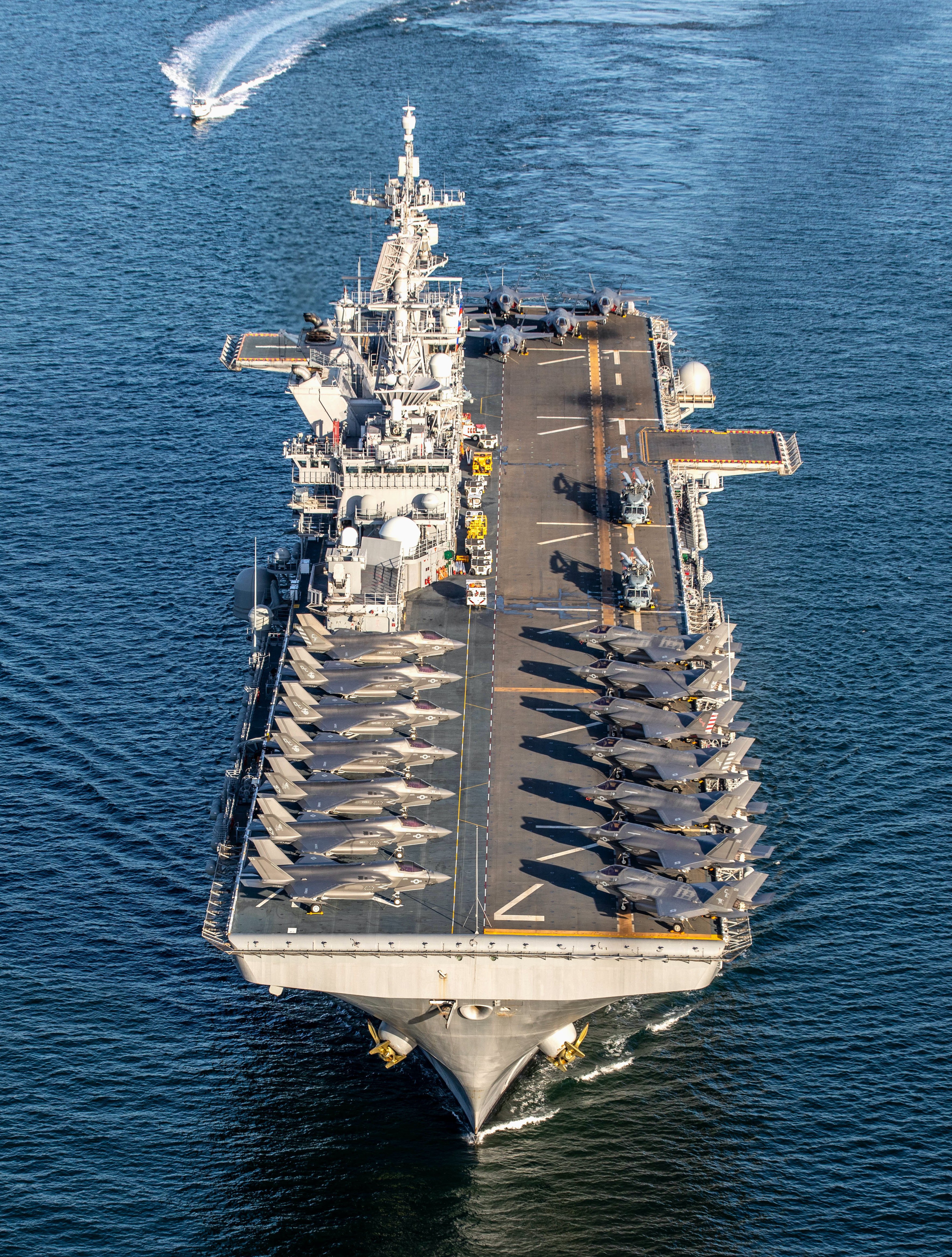
Tripoli left for its maiden deployment in May and tested out the “lightning carrier” or “assault carrier” concept with F-35B Lightning II Joint Strike Fighters aboard.
“One day you can have F-35Bs on the flight deck, the next day you could have MV-22s and you can be putting Marines ashore. And so it just is a very versatile instrument and the fact that you have 14 5th-gen fighters on board – it’s an incredibly capable sensor,” U.S. 7th Fleet commander Vice Adm. Karl Thomas said in October of the assault carrier testing concept. “And so we’re still in the experimentation phase. We wanted to at least try to find out how would you integrate an assault carrier with a full-sized carrier. What missions might it be able to do?”
Tripoli returned home from its seven-month deployment at the end of November, as the Makin Island Amphibious Ready Group began operating in U.S. 7th Fleet. The Nimitz Carrier Strike Group chopped into the area of responsibility in mid-December.
The U.S. Navy also continued to perform Taiwan Strait transits and freedom of navigation operations in the South China Sea – some of which received criticism from China.
Europe
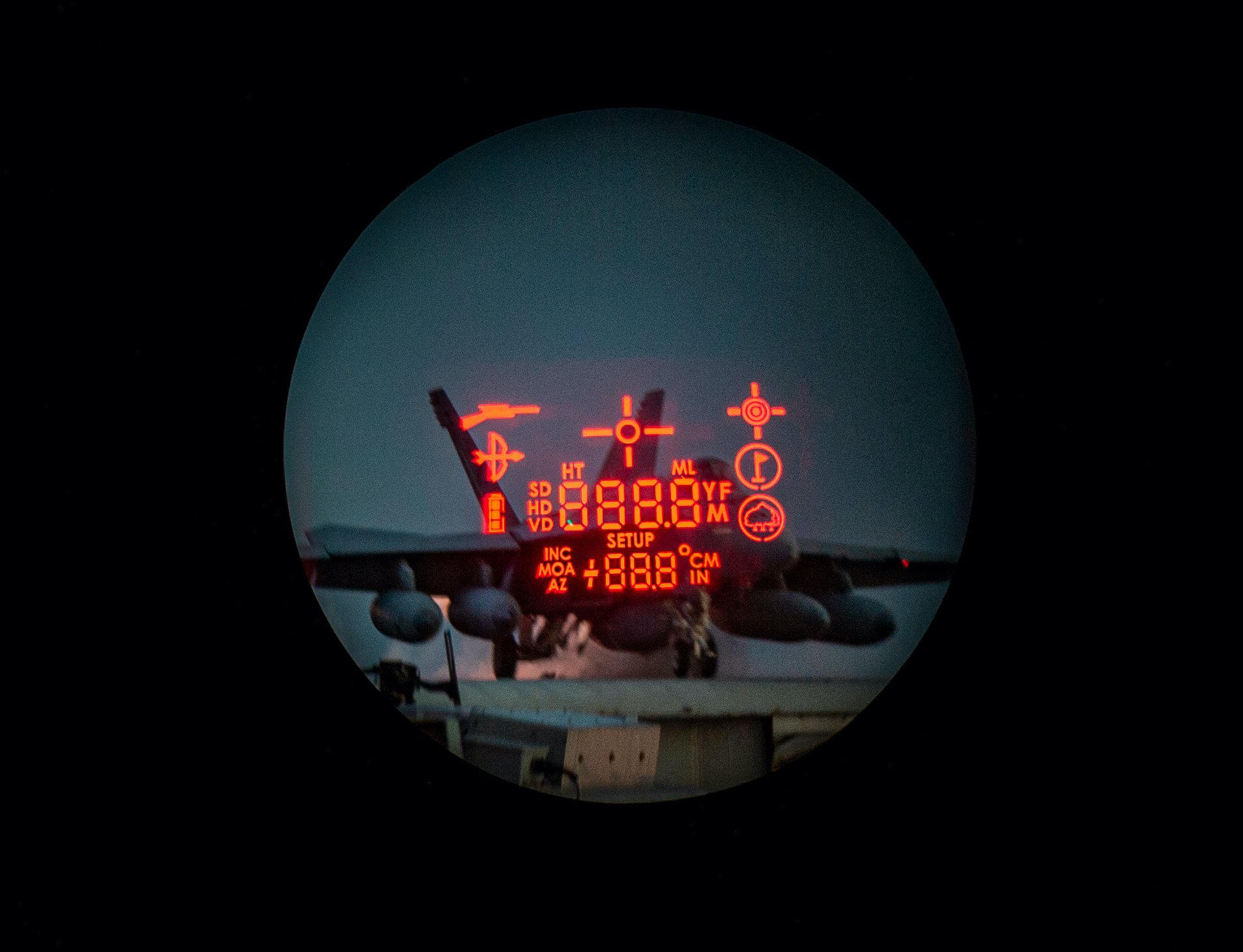
At the end of 2021, Defense Secretary Lloyd Austin ordered the Harry S. Truman Carrier Strike Group to remain in the Mediterranean Sea, instead of heading to U.S. Central Command, as Russia massed troops along its border with Ukraine. Since then, the U.S. Navy has kept a consistent carrier presence in U.S. 6th Fleet.
USS Harry S. Truman (CVN-75) operated throughout the Mediterranean Sea for eight months. Truman’s deployment marked the longest continuous operations for a U.S. aircraft carrier in U.S. European Command in over two decades, USNI News reported.
The carrier remained on station as Russia launched its invasion of Ukraine at the end of February. At times during the deployment, Truman’s carrier air wing launched 80 to 90 sorties a day for missions with NATO.
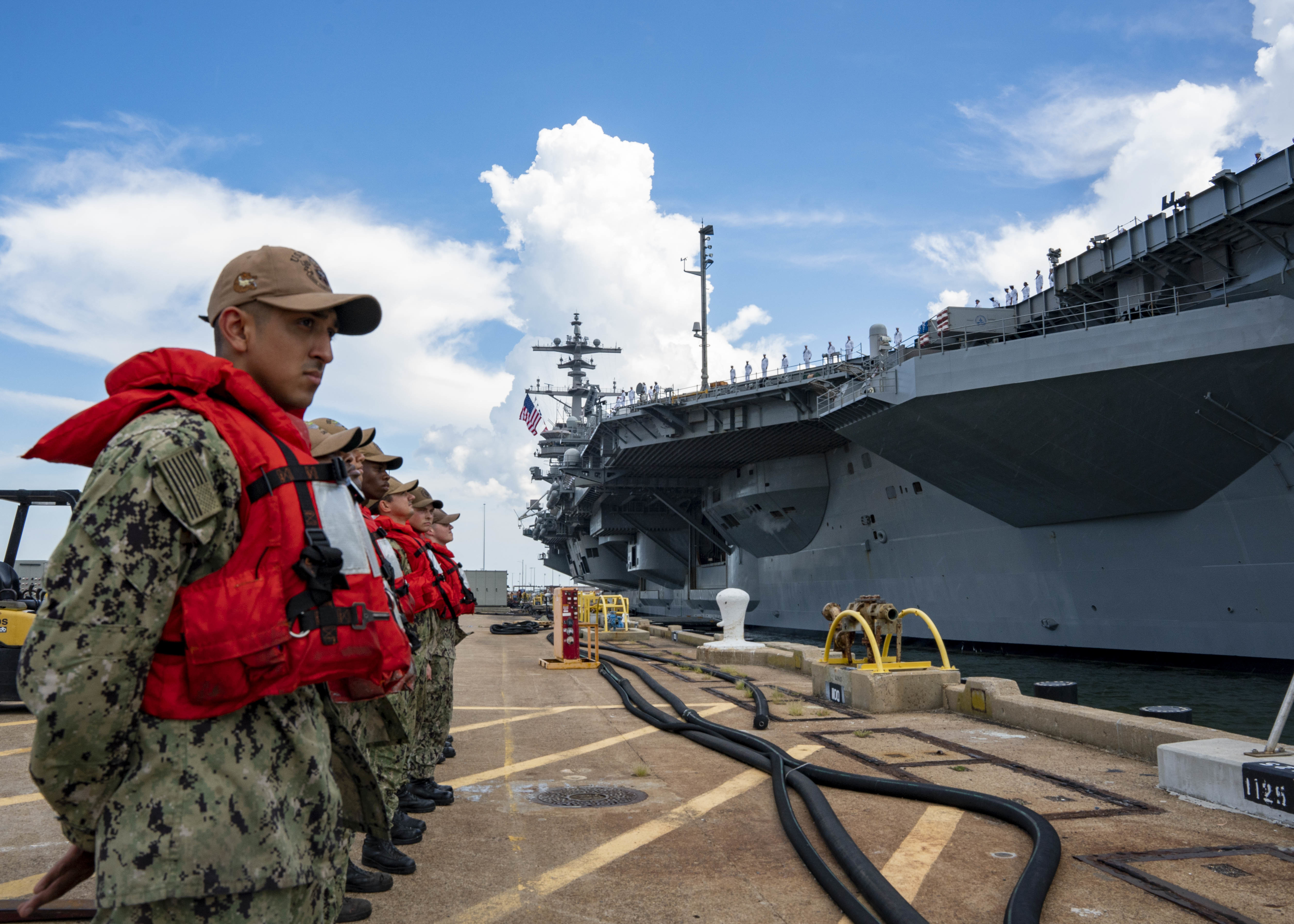
In August, the George H.W. Bush carrier strike group chopped into U.S. 6th Fleet to relieve the Truman CSG so it could head home. Since then, USS George H.W. Bush (CVN-77) has been operating in the region.
In 2022, Truman went under NATO command twice and George H.W. Bush went under NATO command once. When Truman first went under NATO control in January, it was the first time since the Cold War that NATO had assumed command of a U.S. aircraft carrier.
In addition to the consistent carrier presence in the Mediterranean, the Kearsarge Amphibious Ready Group also operated throughout U.S. 6th Fleet for much of 2022.
USS Kearsarge (LHD-3) and USS Gunston Hall (LSD-44) joined a slew of NATO nations and other partners for BALTOPS 2022 in the Baltic Sea in June. Meanwhile, USS Arlington (LPD-24) drilled with the Hellenic Navy in April and participated in U.S. Africa Command’s African Lion 2022 exercise in June.
Atlantic
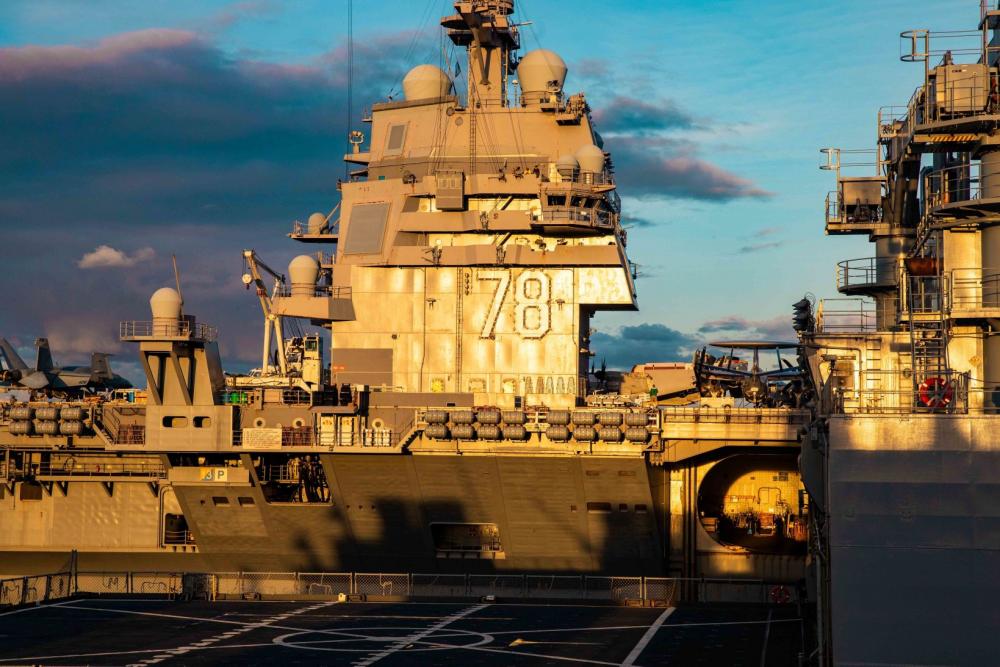
This year marked USS Gerald R. Ford’s (CVN-78) first chance to operationally stress the new systems and technologies aboard the first-in-class aircraft carrier.
Ford left Naval Station Norfolk, Va., in early October for a shakedown cruise that took the carrier to Halifax, Nova Scotia and Portsmouth, United Kingdom for its first international port calls.
“This is really a chance to work with a full strike group with almost a full air wing,” Rear Adm. Gregory Huffman, the commander of Carrier Strike Group 12, told reporters during a USNI News trip aboard Ford in October.
“And then with those allies and partners, to get a good understanding of how the Ford – with its new capabilities – will be able to interact with different ships and perhaps change how we do tactics from a big picture perspective. So that’s what we look to do is just basically explore that new technology and see what kind of operations we can develop out of that.”
Officials planned to hand off control of air wing assets to allies operating nearby with the Ford carrier strike group.
During its time at sea this fall, Ford joined ships from Canada, Denmark, Germany, Spain, France and the Netherlands in the Eastern Atlantic for exercise Silver Wolverine.
Maintenance
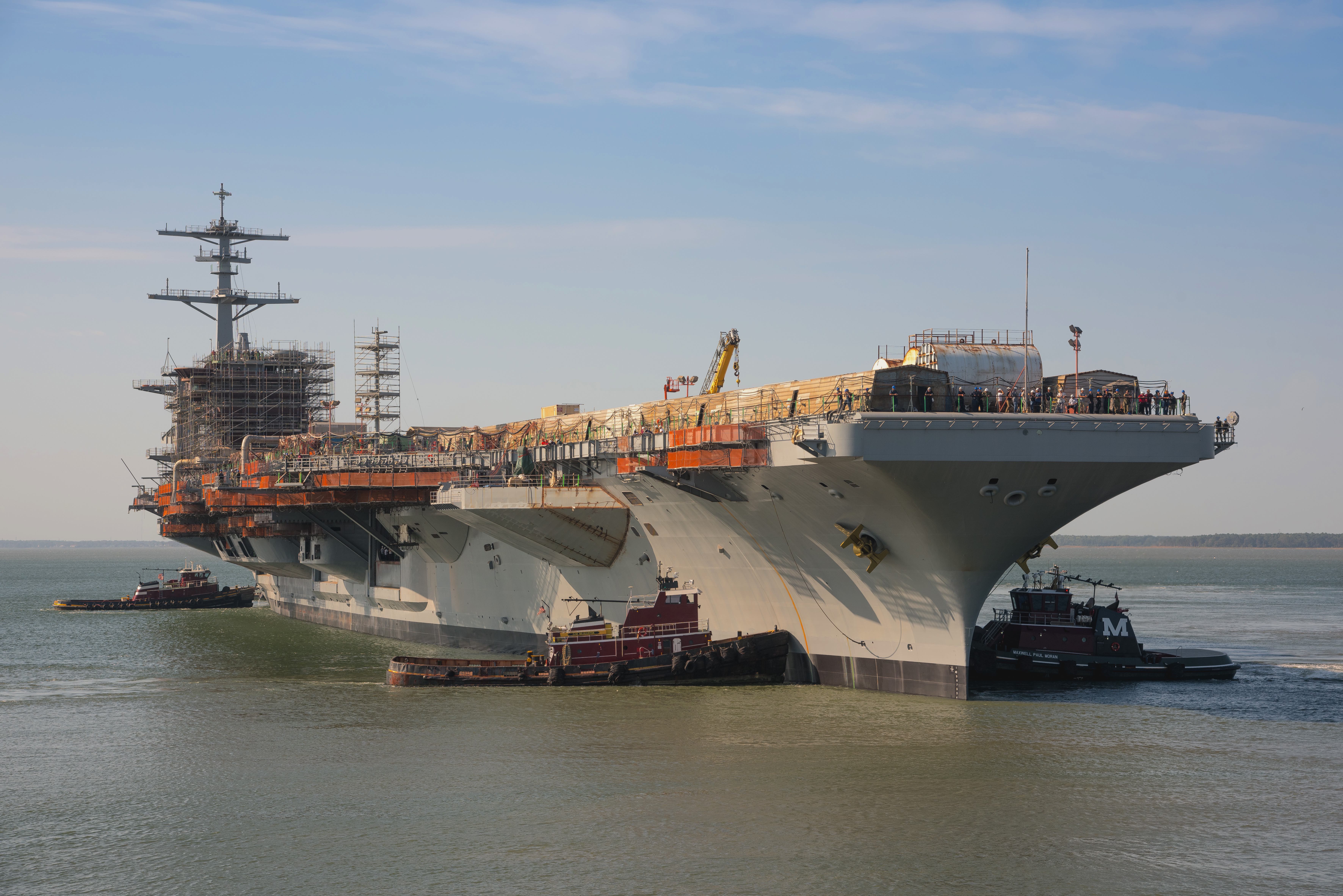
The Navy is still digging itself out of maintenance backlogs both for the service’s aircraft carriers and submarines.
The Fiscal Year 2023 budget proposal disclosed plans for the mid-life refueling and complex overhaul of USS George Washington (CVN-73) to extend to March 2023. The overhaul – currently underway at HII’s Newport News Shipbuilding – was originally scheduled to finish in August of 2021.
The carrier first went in for the RCOH in August 2017. News of the delayed timeline for the RCOH followed several suicides by crew members. Six sailors with George Washington have died by suicide since 2019, according to the Navy, and civilian officials ruled a seventh GW sailor’s death as a suicide.
Meanwhile, Navy officials throughout the year lamented the submarine maintenance backlog that has kept some boats out of the water for years.
Over the last decade, less than one-third of the Navy’s attack submarines have finished their maintenance availabilities on time, according to the head of Naval Sea Systems Command.
“We’ve seen a significant growth in the amount of man-days required in submarine availabilities, particularly in the Virginia class,” NAVSEA chief Vice Adm. Bill Galinis said at a conference in September.
“We’re doing a deep dive to figure out why that is. It’s really a continuous process.”
In November, Program Executive Officer for Attack Submarines Rear Adm. Jonathan Rucker said 18 of the service’s 50 attack submarines are in maintenance or waiting to go into the yard for an availability.
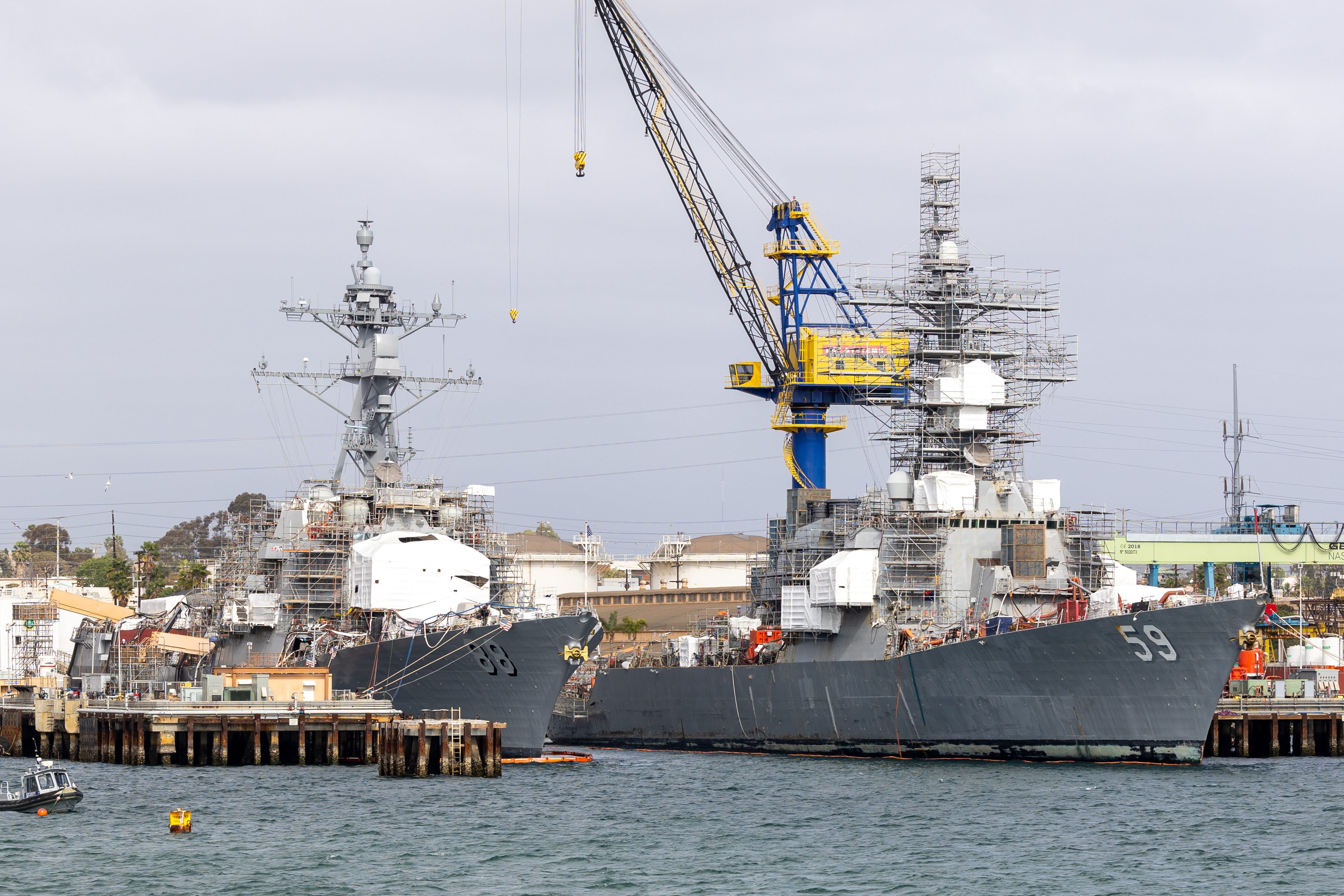
In 2000, the U.S. Navy would begin about 12 maintenance availabilities – that averaged 200 days – for attack submarines per year. Today, the Navy is beginning about 5 maintenance periods per year that last about 450 to 700 days, according to Rucker.
“We have longer ops cycles, which is good. But when the boats come in, they’re in a much more strained condition and we don’t prepare for them as well,” Rucker said at the annual Naval Submarine League symposium.
About thirty percent of the work performed during maintenance availabilities for attack submarines is unplanned, contributing to the backlog, according to Rucker. Another problem for the Navy is that it doesn’t buy enough of the materials ahead of time.
By 2026, Rucker said the Navy hopes to already have 90 to 95 percent of materials by the time a maintenance period starts. Currently, the Navy has about 40 to 50 percent of the materials when an availability begins, he said.
The Navy averaged 1,500 to 1,600 days of maintenance delays in FY 2019 and brought that number down to about 1,100 days for FY 2022, Rucker said at the time. The Navy expects that number to decrease to 700 days by FY 2026.





